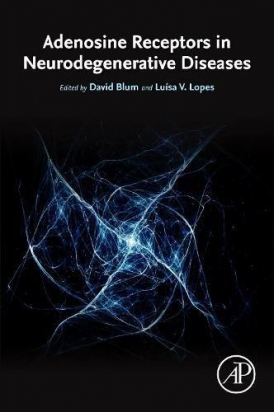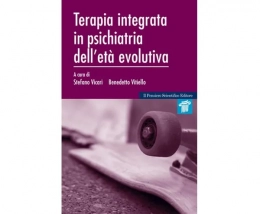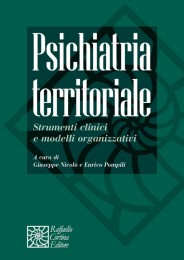Section I: Physiology
Chapter 1. Adenosine Receptor Biology in the Central Nervous System
-
Abstract
-
Sources of Adenosine in the CNS
-
Receptor Subtypes and Their CNS Distribution
-
Crosstalk With Other Receptors
-
Adenosine and CNS Diseases
-
Recent Clinical Trials
-
References
Chapter 2. Adenosine Signaling Throughout Development
-
Abstract
-
Introduction
-
Effects of Adenosine Signaling and Its Dysfunction in CNS
-
Effects of Adenosine in Oligodendrocytes Development
-
Effects of Adenosine on Cardiovascular System During Embryogenesis
-
Postnatal Effects of Adenosine on Cardiovascular System
-
Postnatal Effect of Adenosine on Respiratory System
-
Use of Methylxanthines in Premature Babies
-
Postnatal Effects of Adenosine on the Genitourinary System
-
Postnatal Effect of Adenosine on the Enteric System
-
Postnatal Effect of Adenosine on Other Systems
-
Conclusion
-
References
Chapter 3. Influence of Adenosine on Synaptic Excitability
-
Abstract
-
Introduction
-
Molecular & Physiological Mechanisms
-
Implications for Epilepsy
-
Conclusions and Outlook
-
Acknowledgments
-
References
Chapter 4. Regulation of Synaptic Transmission by Adenosine at the Neuromuscular Junction
-
Abstract
-
Introduction
-
Neuromuscular Junction
-
Adenosine as a Neuromodulator at the Neuromuscular Junction
-
Conclusions
-
References
Chapter 5. Gene Regulation of Adenosine A2A Receptors in the Central Nervous System
-
Abstract
-
General Introduction
-
A2AR Promoter and Gene Structure
-
Epigenetics of ADORA2A
-
Use of DNA Methylating Agents as a Therapeutic Tool
-
The Dual Codon Properties of the A2AR Gene
-
Concluding Remarks
-
Acknowledgments
-
References
Section II: Pathology
Chapter 6. Sleep, Adenosine, and Neurodegeneration
-
Abstract
-
Sleep Phenomenology and Adenosine
-
Sleep and Adenosine Changes Across Normal Ageing
-
Sleep Changes in Alzheimer’s Disease
-
Mechanisms of Alzheimer’s Disease Influence on Sleep
-
Changes in ADORA1 and ADORA2 Expression
-
Association of Alzheimer’s Disease Biomarkers and Sleep
-
Role of Sleep Loss in Alzheimer’s Disease
-
Sleep Changes in Parkinson’s Disease
-
Parkinson’s Disease Role in Sleep Pathology
-
Role of Sleep Loss in Parkinson’s Disease Pathology
-
Treatment Related Issues
-
Summary
-
References
Chapter 7. Neuronal vs Glial Cell Contribution to Adenosine A2A Receptor-Induced Neurodegeneration
-
Abstract
-
Neurodegeneration and Neurodegenerative Diseases
-
Role of A2A Receptors in Neurodegeneration
-
Conclusions
-
References
Chapter 8. Adenosine and Oxygen/Glucose Deprivation in the Brain
-
Abstract
-
Introduction
-
Adenosine is Released by Ischemia and Stimulate All P1 Receptor Subtypes
-
Role of Adenosine Receptors in Ischemia
-
Conclusions
-
Acknowledgments
-
References
Chapter 9. Adenosine Receptors and Memory Disorders
-
Abstract
-
Alzheimer’s Disease
-
Caffeine May Protect Against Cognitive Decline and AD
-
Caffeine, Adenosine Receptor and AD Lesions
-
Conclusion
-
Acknowledgments
-
References
Chapter 10. Control of Motor Function by Adenosine A2A Receptors in Parkinson’s and Huntington’s Disease
-
Abstract
-
Introduction
-
Basal Ganglia Circuitry
-
Adenosine A2A Receptor Antagonists
-
Parkinson’s Disease
-
Effect of A2A Receptor Antagonists on Motor and Sensorimotor Deficits
-
Modulation of Adenosine A2A Receptors and Interaction With the Other Neurotransmitter Systems
-
Adenosine A2A Receptors and Huntington’s Disease
-
Conclusions
-
References
Chapter 11. Adenosine Receptors Oligomers in Parkinson’s Disease
-
Abstract
-
Introduction
-
Adenosine Receptors in the Brain
-
Adenosine Receptor-Containing Oligomers
-
Parkinson’s Disease and Adenosine Receptor Oligomers: Impact on Pharmacotherapy
-
Concluding Remarks
-
Acknowledgments
-
References
Chapter 12. Adenosine Control of Striatal Function—Implications for the Treatment of Apathy in Basal Ganglia Disorders
-
Abstract
-
Introduction
-
Dopamine Control of Striatal Function
-
Differential Dopamine Control of the Direct and Indirect Striatal Efferent Pathways, the “Go” and “NoGo” Pathways
-
Differential Adenosine Control of the “Go” and “NoGo” Pathways. The Adenosine–Dopamine Receptor Heteromers
-
Adenosine Control of the Striatal Glutamate Terminal. The A1R–A2AR Heteromer
-
Dopamine and Striatal Dysfunction. Apathy Versus Akinesia
-
Targeting Adenosine Receptor Heteromers for the Treatment of Apathy
-
Acknowledgments
-
References




